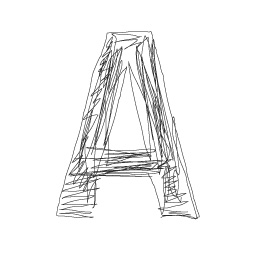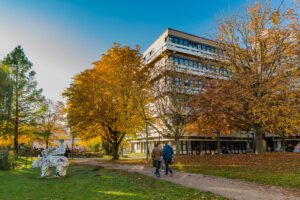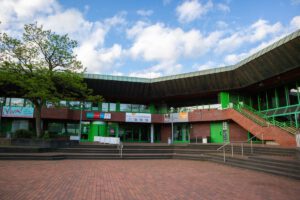Sektion 6 | Politiken des Alltags
Alik Mazukatow M. A. (Berlin)
Sich um die Verkehrswende kümmern: Aktivistische Politiken des Alltäglichen
Die banale Arbeit des Sich-Kümmerns um einander und das gemeinsame Anliegen, „is often neglected and taken for granted (…) It‘s an ethical and political labour that needs to be continuously (re)affirmed (Poderi 2020: 41). Ich denke in meinem Forschungsfeld an Praktiken wie das „Korken“, das heißt Seitenstraßen blockieren, sodass keine Autos in eine Fahrraddemo einfahren oder auch vor dem Ladenregal zu den veganen Gummitieren zu greifen, damit alle Mit-Aktivist*innen an einem langen Aktionstag mitversorgt werden können.
Umso wichtiger wird die Frage nach der alltäglichen Arbeit in sozialen Bewegungen, wenn man bedenkt, dass diese einen zentralen Moment darstellt, wie Aktivismus Begegnungen schafft und soziale Differenzen innerhalb der Bewegung überwindet: Gerade die konsequente Nicht-Hierarchisierung zwischen politischen und dem ersten Anschein nach apolitischen Care-Arbeiten kann dazu beitragen, das Engagement sozialer Bewegungen zu verstetigen (Hamann / Türkmen 2020).
Sich Kümmern als grundlegenden Moment des Politischen zu begreifen, steht im Kontrast zu Politik- verständnissen, die Antagonismus und Dissens als ontologische Prämisse fassen. Sich Kümmern basiert auf einem pragmatischen Verständnis des Politischen. Es kann Solidaritäten formen, die bei städtischen Aufständen entscheidend für politisches Handeln werden können und seien mindestens genauso wichtig zu verstehen, wie Dissens (Holston 2019).
Mein Beitrag möchte aus diesem pragmatischen, feministisch inspirierten Verständnis des Politischen heraus danach fragen, welche Praktiken des Sich-Kümmerns sich im Feld des Verkehrswende-Aktivismus finden lassen und ergründen, welche Bedeutung sie empirisch besitzen (beispielsweise sind sie Grundlage, um eine bessere zukunftsgerechte und demokratische Stadtgesellschaft zu präfigurieren) und welche theoretischen Schluss- folgerungen sich daraus ziehen lassen (beispielsweise wie sich das Politische auch jenseits gemeinsamer Interessen und Identitäten konstituiert, über gemeinsam gelebte soziale Praxis).
Julius Virnyi M. A. (Münster)
Namensänderungen in Westfalen, 1867– 1961: Öffentliche Verwaltung zwischen populärer Praxis und politischer Steuerung
Das Promotionsprojekt befasst sich in historisch-anthropologischer Perspektive mit öffentlich-rechtlichen Namensänderungen im Regierungsbezirk Münster im Zeitraum von 1867 bis 1961. Solche Namensänderungen abseits der zivilrechtlichen Regelung (Heirat, Adoption) galten seit dem späten 18. Jahrhundert als begründungs- bedürftige Ausnahmefälle, die vom Staat – seit 1822 direkt durch den König und ab 1867 durch die Bezirks- regierungen – genehmigt werden mussten. Anknüpfend an die Erkenntnisse aus den Forschungen der Neuen Kulturgeschichte und Kulturanthropologie werden Namensgebung und Namensführung als universelle Praktiken verstanden, die Aufschlüsse über das jeweils spezifische und sich historisch wandelnde Alltagsleben der Namensträgerinnen und -träger geben. Da Namen im modernen Nationalstaat gleichzeitig durch ihre Identi- fizierungsfunktion gekennzeichnet sind, öffnet sich durch ihre Erforschung ein Fenster zur Betrachtung von gesellschafts- und machtpolitischen Dynamiken.
Die Studie untersucht zum einen zentral die Frage, wie Gesuchstellerinnen und Gesuchsteller ihre Namensänderungswünsche beschrieben und plausibilisierten und leuchtet andererseits aus, wie die Bürokratien darauf reagierten: welche Behörden, Institutionen und Personen wurden in den Bearbeitungsprozess der Gesuche involviert und wie funktionierte die Kommunikation zwischen ihnen? Welche Wissensbestände, Informationen und Dokumente wurden für die Entscheidungsfindung angefordert oder produziert und in welchen Kreisen zirkulierten sie?
Im Sinne der Kulturgeschichte der Verwaltung und der Anthropology of Bureaucracy wird Verwaltungshandeln dabei nicht als rationale Ausführung von Gesetzesvorgaben, sondern vielmehr in praxeologischer Perspektive als Ort von lokaler Herrschaftsausübung aber auch der Widerständigkeit und des Eigen-Sinns der Menschen (sowohl der Verwalteten als auch Verwaltungsleute) interpretiert. Als Quellengrundlage dienen vorrangig die Über- lieferungen der Aktenbestände der Landes- und Kommunalarchive. Ergänzt wird dieser Quellenkorpus durch zeitgenössische Expertendiskurse, beispielsweise aus juristischen Fachzeitschriften und Ratgeberpublikationen. Dieser Zugang ermöglicht es, die Produktion, Konstitution und Zirkulation von Kategorien wie Familie, Nationalität, Geschlecht, Klasse, Identität etc. aufzuschlüsseln, die sowohl Individuen wie Institutionen der öffentlichen Hand gemeinsam und oft mit unterschiedlichen Interessen hervorbringen.
PD Dr. Victoria Hegner (Berlin)
Feldforschung auf schwierigem Terrain – die Aushandlung und Rolle von Diversitäts- und Gleichstellungsansprüchen im universitären Alltag
Bisher sind im deutschsprachigen Kontext ethnografische Studien zum universitären Alltag – zu den „seemingly trivial tasks and routines“ (Ehn et al. 2016, 1) im akademischen Dasein an Hochschulen – kaum unternommen worden, wo doch gerade der für das Fach so wichtige Begriff des Alltags uns immer auch zu uns selbst führt (Tschofen 2006) und also zu unserem eigenen täglichen Einerlei in der Wissenschaft und ihren zentralen Institutionen, Strukturen und Akteur*innen.
Davon ausgehend begibt sich die Präsentation ethnografisch auf das Terrain der Hochschulpolitik und und fokussiert hier die gegenwärtig intensivierte Aushandlung von Ansprüchen auf Chancengleichheit und Diversität im universitären Alltag. Es werden hier erste Ergebnisse eines Forschungsprojektes geboten, wobei sie unter dem Fokus der forschenden Zugangsweise zum universitärem – zum eigenen – ‚Feld‘ dargestellt und reflektiert werden. Der Art des Zugangs und der Zugänglichkeit legen bereits vieles über die gepflegten Routinen und Selbstver- ständlichen im ,Feld‘ offen. Wie einzelne Universitäten dem Projekt und der ethnografischen Methode begegneten, wie auf das Chancengleichheits- und Diversitätsthema reagiert wurde und welche strukturellen Mechanismen der „Abwehr“ wie auch „Einbindung“ einsetzten und welche Akteur*innen dabei ins Spiel kamen, beinhaltet dabei entscheidende Erkenntnissen darüber, wie Fragen des Gendermainstreaming und der Forderung nach „Vielfalt“ den universitären Alltag prägen und hier zwischen struktureller Wirkkraft und individueller Handlungsmöglichkeit verhandelt werden. Wenn dies anhand dichter Beschreibungen dargelegt wird, so geht es nicht allein um eine Kulturanalyse des ‚eigenen Feldes und Alltags‘, sondern immanent sollen auch die Potentiale und Grenzen des ethnografischen Zugangs ausgelotet werden.
[Der Beitrag muss leider entfallen, 20.9.23]


